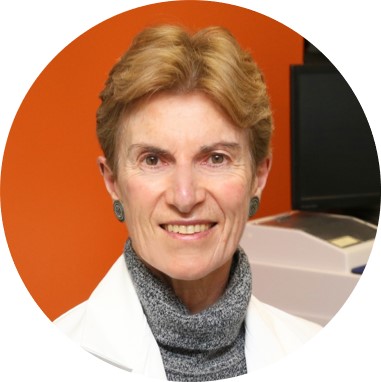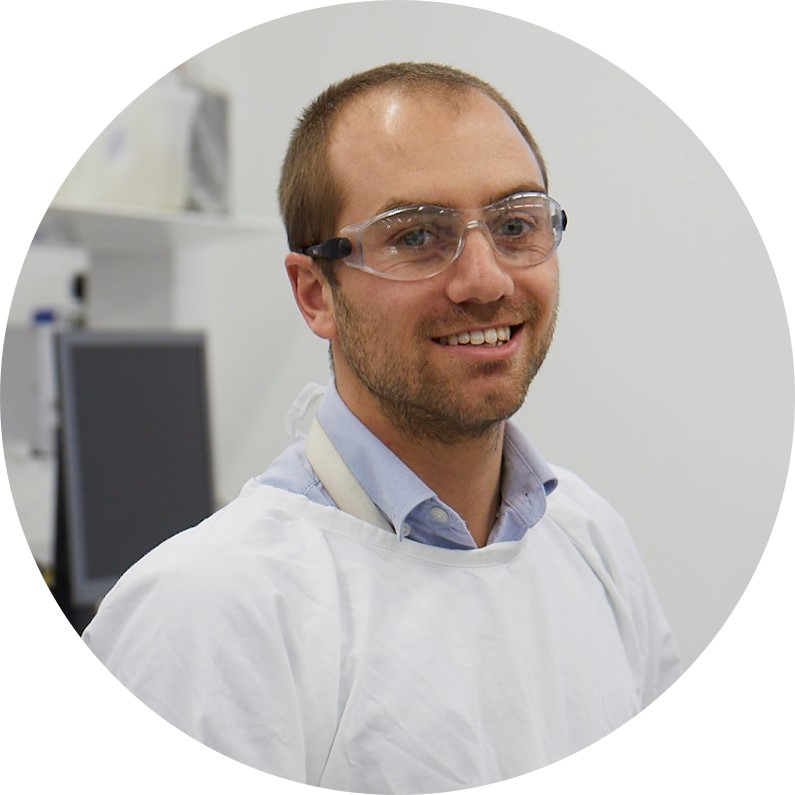Molecular and Cell Biology

Professor Marcia Haigis
Professor of Cell Biology
Department of Cell Biology, Harvard Medical School
Marcia C. Haigis obtained her PhD in Biochemistry from the University of Wisconsin in 2002. She performed postdoctoral studies at MIT studying mitochondrial sirtuins and metabolism. In 2006, Dr Haigis joined the faculty of Harvard Medical School, where she is currently a Professor in the Department of Cell Biology. Dr Haigis is an active member of the Paul F Glenn Center for the Biology of Aging, a member of the Ludwig Center at Harvard Medical School, and was recently selected for the National Academy of Medicine Emerging Leaders in Health and Medicine Program. Her research aims to: identify molecular mechanisms by which mitochondria respond to cellular stress and to elucidate how these cellular mechanisms contribute to aging and age-related diseases, such as cancer. The Haigis lab has made key contributions to our understanding of metabolic reprogramming in cancer, including identifying nodes of metabolic vulnerability in the control of fat oxidation in leukemia and dissecting the effect of diet on anti-tumor immunity.

Professor Joel Mackay
School of Life and Environmental Sciences
University of Sydney
University website @JoelPMackay
Joel Mackay trained as a chemist at the University of Auckland and a chemical biologist at The University of Cambridge before coming to Australia to postdoc with Glenn King at the University of Sydney. Over the course of the subsequent 25 years, he has succeeded in moving a total of about 20 metres up the corridor to where he runs a laboratory that is focused on the molecular mechanisms underlying mammalian gene regulation. His main expertise is structural biology and the analysis of protein interactions, but that hasn’t stopped the lab branching out into more areas than it probably should have. The work of his group has been recognized by several national scientific awards, including the Gottschalk medal from the Australian Academy of Science, the Roche medal and Labgear award from the ASBMB and the Prime Minister’s Life Scientist of the Year award.
Paper related to this talk
Cyclic peptides can engage a single binding pocket through highly divergent modes
Patel et al. (2020). Proc Natl Acad Sci U S A, 117, 26728-38

Associate Professor Dominic Ng
School of Biomedical Sciences
The University of Queensland
Dominic is an Associate Professor at the School of Biomedical Science, UQ where he leads a research program on the molecular control of tissue growth with a focus on the regulation and function of protein kinases. His PhD was awarded in 2004 followed by post-doctoral training overseas at the Institute of Molecular and Cell Biology, A*STAR, in Singapore where he worked on signalling regulation of microtubules in migrating cancer cells. He returned to Australia to the Bio21 Institute, University of Melbourne, on an NHMRC Peter Doherty Fellowship (2006-2010) followed by a Medical Faculty Trust Roper Fellowship (2011-2012) and an ARC Future Fellowship (2013-2016). In this time, he established an independent research program investigating complex signalling mechanisms in cancer, cardiovascular and neurological disease using approaches in optical imaging, proteomics, reverse genetics and diverse model systems. In 2015, he relocated his group to the University of Queensland to take up a Senior Lectureship in Physiology and was promoted to Associated Professor in 2018. He is currently appointed to the Australian Academy of Science’s National Committee for Cell and Developmental Biology, is National Secretary of the Australian Biochemical Society and associate editor for IUBMB Life, the flagship journal of the International Union of Biochemistry and Molecular Biology. His recent publications, and topic of this presentation, have described centrosome-associated signalling mechanisms required for stem cell fate specification and tissue morphogenesis.
Author's key paper
Stat3 regulates microtubules by antagonizing the depolymerization activity of stathmin
DCH Ng, BH Lin, CP Lim, G Huang, T Zhang, V Poli, X Cao. The Journal of cell biology 172 (2), 245-257

Dr Gabriella T. Heller
Schmidt Science Fellow
University College London, Institute of Structural and Molecular Biology
Gabriella Heller studied Chemistry and Mathematics at Pomona College in Claremont, California. She completed her MPhil degree in the Chemistry Department at the University of Cambridge in 2014 as a Churchill Scholar, and remained in that Department as a Gates Cambridge Scholar for her PhD. From 2019 to 2020 she was the Rosalind Franklin Research Fellow at Newnham College, Cambridge and is currently a Schmidt Science Fellow based in the Department of Structural and Molecular Biology at University College London.
Gabriella’s research focuses on intrinsically disordered proteins, biomolecules lacking a single, rigid three-dimensional structure that instead exist as a dynamic equilibrium of conformationally distinct states. These proteins are highly prevalent in diseases such as dementia and cancer, yet are often considered therapeutically ‘untargetable’ as they lack traditional drug binding pockets. Using a combination of computational and experimental biophysical techniques, Gabriella has elucidated novel mechanisms by which small molecules can interact with disordered proteins, and in particular, has shown the important role of conformational entropy in this binding process.
Paper related to this talk
Small molecule sequestration of amyloid-β as a drug discovery strategy for Alzheimer's disease.
Heller, Gabriella T., et al. Science Advances (2020). Vol. 6, no. 45, eabb5924. DOI: 10.1126/sciadv.abb5924
Physiology and Anatomy

Professor Eduardo Colombari, DDS; PhD
Chair of Department, Department of Physiology and Pathology
School of Dentistry of Araraguara, Araraguara
São Paulo State University (UNESP), Brazil
Website @Physiology_Now Lattes iD Orcid iD
>>> View and/or download conference session
The goal of research in Dr Colombari's laboratory is to determine mechanisms of neuronal interaction between cardiovascular-respiratory control and body fluid homeostasis. In addition, possible dysfunction in CNS sympathetic and respiratory regulatory circuits in cardiovascular and metabolic diseases. Studies are carried out in animal models of disease. Major methodological approaches include in vivo single unit recording from individual CNS pre-sympathetic neurons, drug microinjections in CNS, neuroanatomical methods, whole-animal hemodynamic studies, and recording of cardiovascular function in conscious rats and mice. Additional techniques include immunohistochemical staining, water and salt intake, AAV- and Lentiviral gene transfer to site specifically alter gene expression in CNS neurons. Collectively these approaches are used to investigate sympathetic circuit dysfunction in models of arterial hypertension (SHR and Renal model) and in metabolic disorders (obesity & high salt diets) and sleep apnea.
Author's key paper
Lesions of the commissural nucleus of the solitary tract reduce arterial pressure in spontaneously hypertensive rats.
Hypertension, 2001
Role of the medulla oblongata in hypertension.
Hypertension 2001

Professor Diane Fatkin
University of New South Wales
Victor Chang Cardiac Research Institute
>>> View and/or download conference session
Professor Diane Fatkin trained in Clinical Cardiology and Molecular Genetics and is currently Head of the Sr Bernice Research Program in Inherited Heart Diseases, in the Molecular Cardiology Division of the Victor Chang Cardiac Research Institute, Sydney. She also holds appointments as Honorary Medical Officer in the Cardiology Department, St Vincent’s Hospital, and Professor (conjoint) in the Faculty of Medicine, UNSW Sydney. Her research is focused on understanding the molecular genetic basis of inherited cardiomyopathies, with a specific interest in familial dilated cardiomyopathy and familial atrial fibrillation. This work spans from clinical and genetics studies in families with inherited cardiomyopathies, to functional genomics in cell, mouse, and zebrafish models. A major objective of the team’s research is “bench-to-bedside” translation of new insights about disease mechanisms into personalised approaches to patient management.
Author's key paper
Missense mutations in the rod domain of the lamin A/C gene as causes of dilated cardiomyopathy and conduction system disease.
Fatkin D, MacRae C, Sasaki T, Wolff MR, Porcu M, Frenneaux M, Atherton J, Muehle G, Vidaillet HJ, Spudich S, De Girolami U, Muntoni F, Johnson W, McDonough B, Seidman JG, Seidman CE.
N Engl J Med 1999; 341:1715-1724.

Dr Benjamin L. Parker
Department of Physiology, School of Biomedical Sciences
Faculty of Medicine, Dentistry and Health Sciences
University of Melbourne
>>> View and/or download conference session
Dr Benjamin Parker completed is PhD at the University of Southern Denmark and University of Sydney where he developed assays to quantify protein modifications by mass spectrometry. He performed post-doctoral research in the Diabetes Program at the Garvan Institute and then obtained an NHMRC ECF in the Metabolic Systems Biology Program at the Charles Perkins Centre. He is currently a group leader under the Driving Research Momentum scheme in the Department of Physiology at The University of Melbourne. His research team is focused on developing novel proteomic and computational tools to understand how genetic variants and signal transduction regulate metabolism with the goal of identifying new therapeutic targets to treat metabolic disease.
Author's key paper
An integrative systems genetic analysis of mammalian lipid metabolism
Parker B.L. et al. (2019). Nature, 567:187-193.